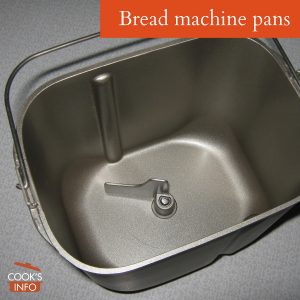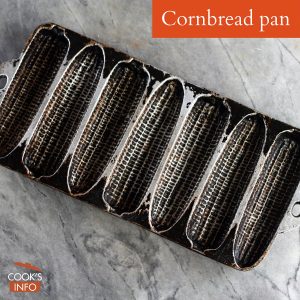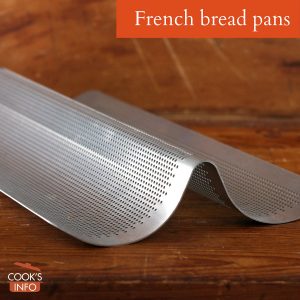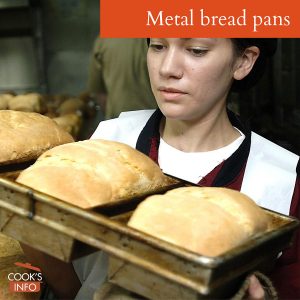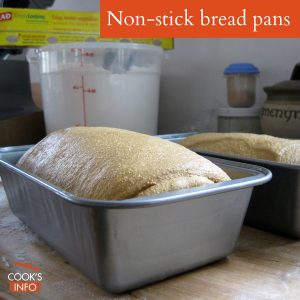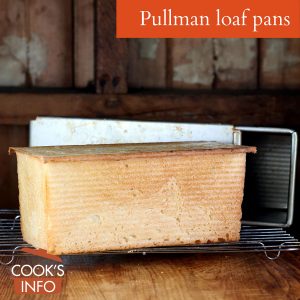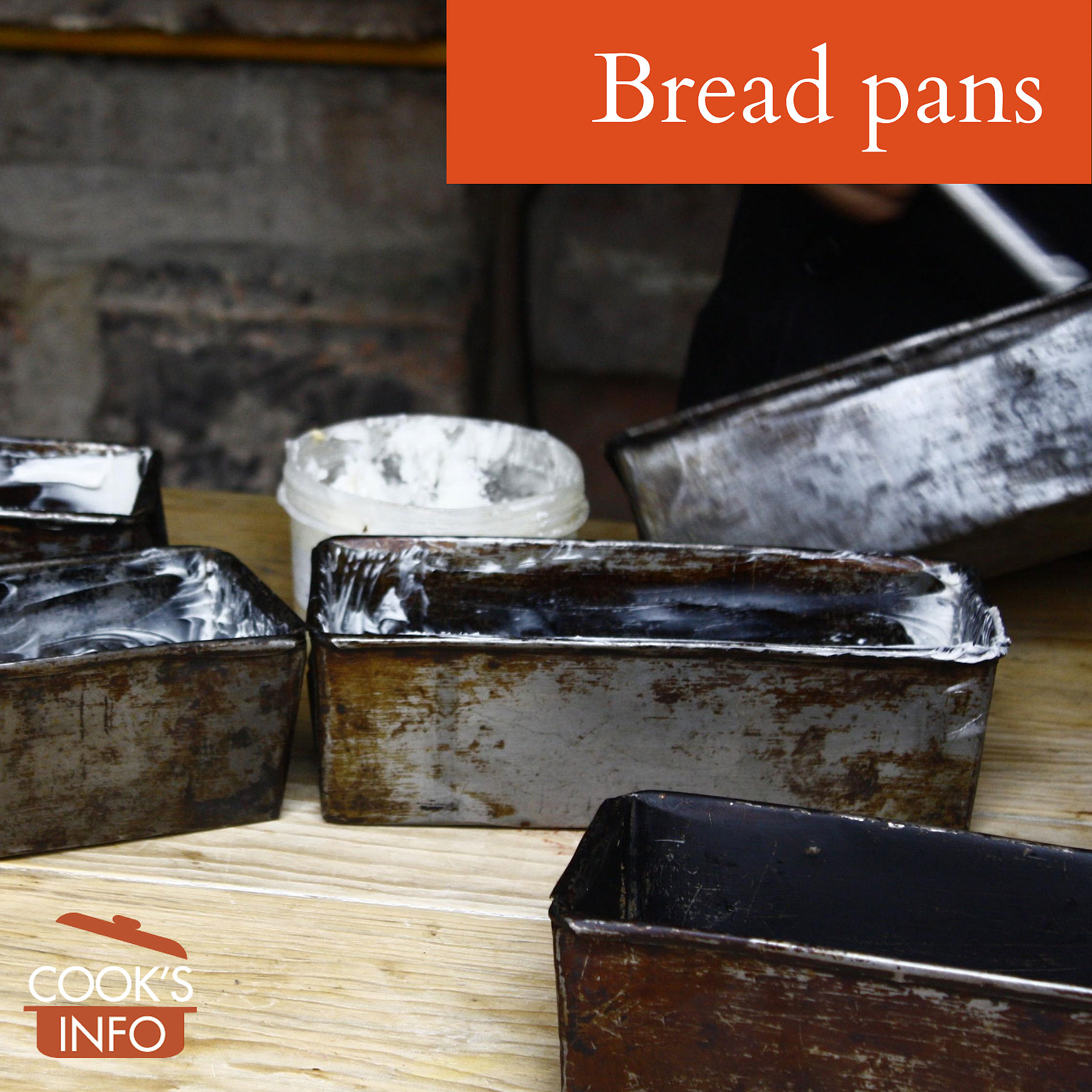
Bread pans being greased. pxfuel.com / CC0 1.0
Bread pans are pans primarily used for baking bread in. They are typically in a rectangular shape. They can also be used for quick breads such as banana breads, or for meatloaf.
Bread pans can be made of metal, stoneware, CorningWare, glass, silicone, terra cotta or enamelware. You can also get disposable ones made of foil. Silicone ones will have stiffening supports in them so that they don’t have to be supported by a baking sheet.
Usually rectangular, with plain, flat sides and bottoms, there are two common sizes: 23 cm long by 13 cm wide (9 inches long by 5 inches wide), and 22 cm long by 11 cm wide (8 ½ inches long by 4 ½ inches wide).
In addition to plain-sided ones, you can also get ones that have designs impressed into them, so that they in effect act as decorative moulds for making specialty breads such as lemon bread.
Cooking Tips
When greasing a bread pan, use a solid fat such as butter, margarine or shortening. Oil doesn’t work as well, because the dough just absorbs it.
A sign that bread is done is that it should release itself easily from the pan. Always remove bread from a bread pan after it is finished baking, or it will go soggy.
If you are baking a bread with fruit in it, pieces of which might stick to the pan, some bakers first grease the pans and then line the pans with brown paper or parchment paper.
You can wipe bread pans clean with a damp cloth or sponge. Many bakers, however, do not if the pans are truly dedicated to just bread.
Substitutes
Large juice or coffee cans.
Equivalents
- A 20½ x 10 x 6½ cm (8 x 4 x 2½ inch) bread loaf pan will hold a 450 g (1 pound) loaf of bread (calling for approximately 2 cups / 10 oz / 300 g of flour)
- A 23 x 13 x 7 cm (9 x 5 x 2 ¾ inch) bread loaf pan will hold a 900 g (2 pound ) loaf of bread (a bread recipe calling for approximately 3 ¾ to 4 cups / 20 oz / 550 g of flour)
- A 23 x 13 x 7 cm (9 x 5 x 2 ¾ inch) bread loaf pan equals two 7 x 3-inch OR three 6 x 3 inch mini pans
History Notes
Bread used to be round because it was just plopped in the oven, and went round. There were no bread pans. Bread pans could have been made of iron, but they would have been too expensive.
In the 1700s, the tin mines in Cornwall, England, were mined in earnest again, for the first time since the Romans, and the tin was used to make affordable bread pans. Bread baked in these bread pans could be toasted and sliced more easily — just in time for the rise in popularity of the sandwich.
Types of bread pans
Terra Cotta Bread Pans
Terra cotta bread pans need a few more bakes than metal ones do before they are seasoned. To season them, you are first supposed to soak the pan in water first, then rub it with oil. Then bake in a low oven (125 C / 250 F) until the oil is dry, and let cool completely, You then repeat the process an additional three times.
Braided Loaf Pans
Braided loaf pans have a moulded shape on the bottom. When the bread is baked, you flip the loaf over to present it “bottom up” so that it looks like a braided loaf of bread. The purpose is to save you all the work of making a braided loaf. Some shake their heads, pointing out that braiding dough is the work of seconds, and nothing compared to the work of making the dough in the first place.
One problem with the finished product can be that the top rises — as bread is wont to do — in a curved formation, making for an unstable bottom when you flip the loaf. The tippiness of the loaf on the breadboard is going to be the giveaway that all is not as it seems.


